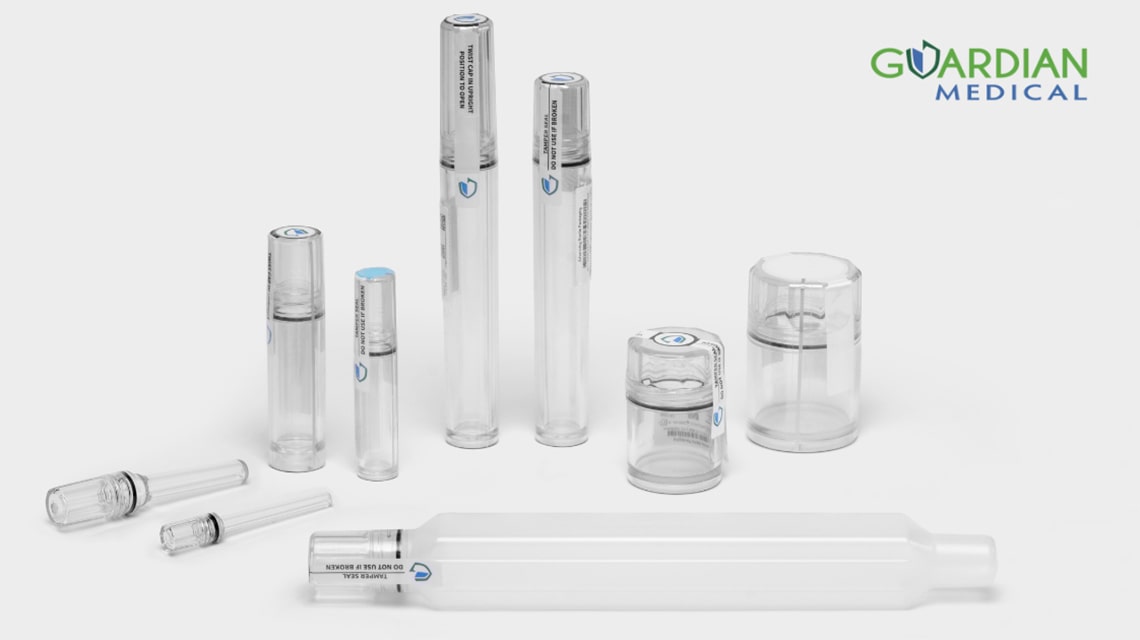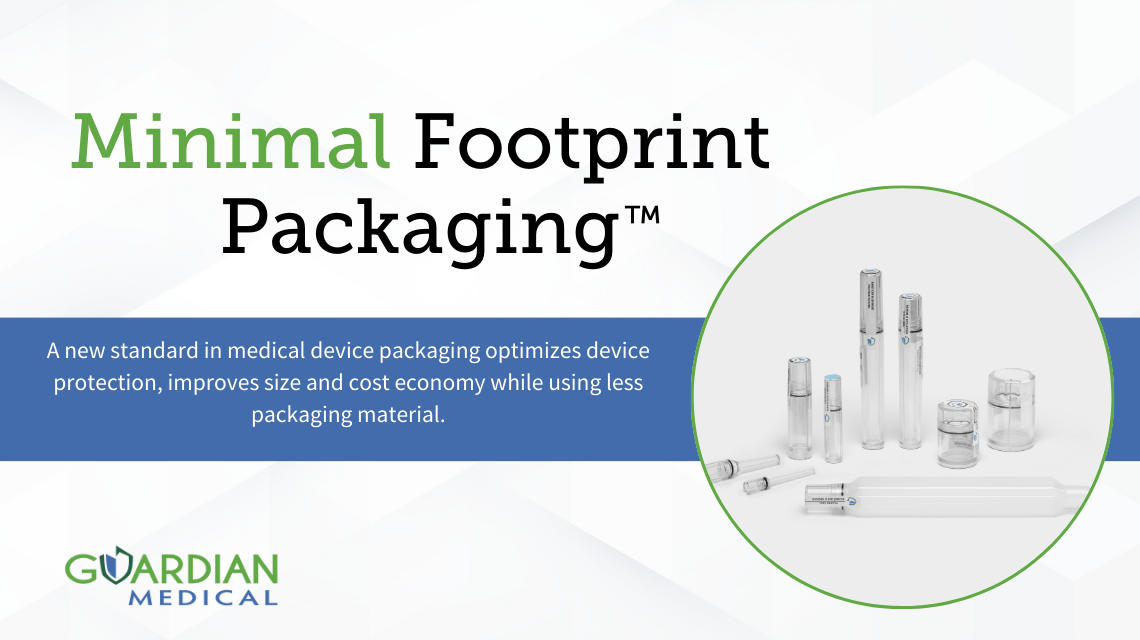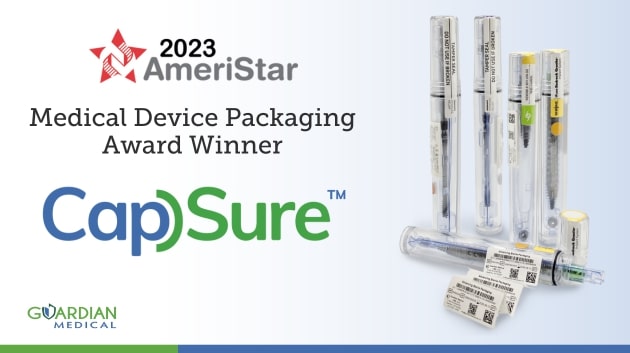A number of benefits can be realized from the use of a single-barrier system over the more common dual-barrier sterile solution.
More than ever, medtech packaging is being examined by both medical device manufacturers and their healthcare customers. While the demands on this component have grown, the essential mission of the packaging remains unchanged—to deliver the medical device to the final user without damage or loss of its sterile barrier for aseptic presentation at the point of care. How this is accomplished, however, can vary.
Keeping a variety of factors in mind such as the materials used to the waste created to the additional value it can bring, medical device packaging developers face a challenge. As such, when a company offers a solution that provides a positive answer to many of these concerns, it’s worth taking note.
Guardian Medical USA Inc. has developed a single-barrier sterile packaging solution to handle the protection often resolved with a dual-barrier system. In the following Q&A, Tracy Momany, president and CEO of the company, responds to questions about this offering, applications for it, why it may be a preferred alternative, and how it addresses sustainability concerns.
Sean Fenske: What is the difference between single- and double-barrier sterile packaging?
Tracy Momany: More and more medical devices, such as implants and single-use instruments, are packaged terminally sterile. That is, they are sealed in a package in a clean environment and then, the sealed package is sterilized with gamma radiation, EtO gas, or other sterilization process.
Historically, this packaging has been composed of two sterile barriers; for example, a sealed pouch sealed in a second pouch, or a sealed tray sealed in a second tray. A sterile barrier must be validated as such per the requirements of ISO 11607. Single-barrier sterile packaging has only one layer of sterile barrier (i.e., a single sealed pouch or a single sealed tray).
Fenske: Why is one used over the other?
Momany: The practice of dual sterile barriers was originally adopted as traditional packaging materials include thin films that are susceptible to damage from external factors such as shipping and handling, as well as damage from the device itself. Having dual-barrier packaging provides a second layer of protection so at least one sterile barrier is maintained—the “belt and suspenders” approach.
However, if the sterile packaging is resistant to damage from both external conditions and the device, a single sterile barrier is all that is required to ensure the device remains sterile. According to ISO 11139:2018, a sterile barrier system is “the minimum packaging configuration that provides a microbial barrier and allows aseptic presentation of the product unit at the point of use.”
Additional information on the usability of sterile barrier systems for medical devices is detailed in the Sterile Barrier Association’s Guidance Document.
Fenske: For what medical device applications is this type of packaging used?
Momany: As mentioned previously, most medical devices that are packaged sterile have a dual-barrier configuration. This practice, however, isn’t based on the device; it is because of the nature of the packaging. From a regulatory standpoint, any device can be packaged with a single barrier if the packaging is robust and a safe transfer into the sterile field can be maintained.
More than half of Guardian Medical’s customers utilize our CapSure™ packaging as a single sterile barrier package for devices ranging from cervical cages to IM nails.
Fenske: Are there restrictions on what types of sterilization methods can be used with single-barrier sterile packaging?
Momany: The choice of sterilization method is dependent upon the devices and the packaging materials. For example, some devices are made from materials that degrade when exposed to gamma and thus require other sterilization processes. Also, to sterilize with EtO gas, the packaging material must include a permeable membrane, such as Tyvek, to allow the EtO gas in and out. Barring those requirements, a single barrier package can be sterilized with the same processes as a dual-barrier package.
Fenske: How do you protect a device in single-barrier sterile packaging from damage?
Momany: If the package and seal are sufficiently strong, they can protect the device and maintain its sterility using just a single sterile barrier. The packaging must be able to resist external threats such as moisture and withstand the pressures of crushing or impact that are typical in distribution processes. Moreover, the seal and packaging should remain intact despite any sharp or rough edges on the device or the weight of the device itself.
Guardian Medical’s CapSure tubes offer an impact-resistant solution. Our sealing system is exceptionally sturdy and capable of withstanding pressures up to 100psi without compromise. This durability in our CapSure package and seal fosters confidence in the effectiveness of a single sterile barrier.
Fenske: Are there ways to address excess waste, recyclability, and/or sustainability when using single-barrier sterile packaging?
Momany: First, we should consider packaging as inherently sustainable; even if it gets thrown away, it still achieves the goal of delivering the product safely. That said, we should always try to avoid waste and reduce, reuse, or recycle packaging. Utilizing single sterile barrier packaging removes a layer of packaging that’s present when a dual-barrier solution is used. As long as the packaging is sufficiently robust to protect the product, like Guardian Medical’s CapSure tubes, reducing the packaging is a positive step toward sustainability.
Fenske: Do you have any additional comments you’d like to share based on any of the topics we discussed or something you’d like to tell medical device manufacturers?
Momany: Guardian is passionate about sustainability. In addition to enabling a single sterile barrier, our CapSure packaging is resilient enough that no secondary packaging is required to protect the sterile barrier. Thus, a CapSure tube in a single barrier configuration has two fewer layers of packaging than a traditional dual-barrier sterile packaging format such as a pouch in a pouch in a box, which has two sterile barriers and a protective secondary package. Moreover, our CapSure tubes are made from a recyclable material—Tritan.
About Guardian Medical
Guardian Medical is committed to excellence in the medical device packaging sector. We design, develop, manufacture, and distribute innovative sterile packaging solutions that ensure the safety and sterility of medical devices and implants. With a focus on pioneering new technologies and sustainable practices, Guardian Medical continues to lead the industry towards safer, more efficient medical device packaging.






